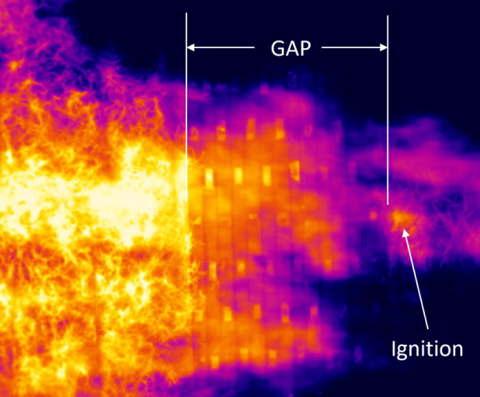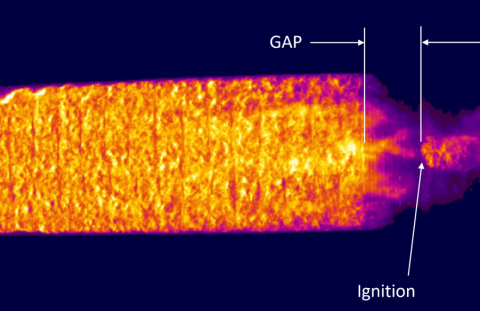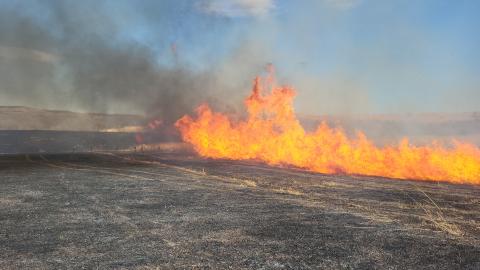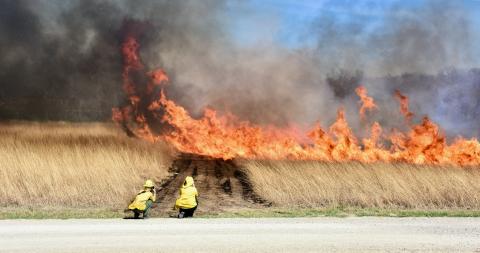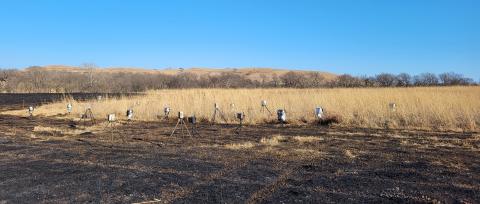Fire spread can be characterized as a continuous sequence of ignitions. Ignition is a local phenomenon, governed by complex interactions between fuel and environment. Seemingly insignificant changes in vegetation orientation or spacing can significantly affect the ignition process and result in fire either bridging a gap in fuels or extinguishing at the gap boundary. This study seeks to improve understanding of ignition by exploring the physics underlying fire’s response to gaps in vegetation under the influence of varying wind and fuel characteristics.
Land management agencies recognize that vegetation and environmental heterogeneity collectively drive fire behavior and fire effects on soil and plants. The interactions between energy transport in wildland fires and the spatial distribution of fuels and wind are complex. While intuition and anecdotal observations provide some guidance, the current state of wildland fire science lacks full understanding of the dependency between fire and the spatial distribution of wind and fuels. Improved understanding of how fire responds to changes in vegetation type and density combined with wind and topography would improve the ability of the fire science community to effectively model fire behavior and the capability of operational fire managers to use fire as a land management tool.
Project Tasks:
- Conduct a series of laboratory experiments in find dead fuels (e.g. pine needles) exploring the how and when fire bridges artificially created gaps in surface fuels and the effects of fuel-free areas (i.e. patches) on relative rate of spread.
- Complete a series of field burns in naturally occurring fuels in closed and open forest canopies again with artificially created gaps in vegetation.
- Develop a statistical model predicting the probability of fuel break effectiveness for various environmental conditions.
- Compare research findings against a heat transfer-based fire-atmosphere model.
- Develop guidelines for operational fire management.
- Develop a summary of research findings within the context of fire model improvements.
This research has created a starting point to better understand fuel treatment methods, locations, fuel break effectiveness and ability to alter fire behavior. Future work will build on this foundational science through the recently funded ESTCP project: Multi-Agency Demonstration and Evaluation of Fuel Treatment Effectiveness in Discontinuous Fuels Using a Next Generation Physics-based Model to Support DoD Wildfire Management
